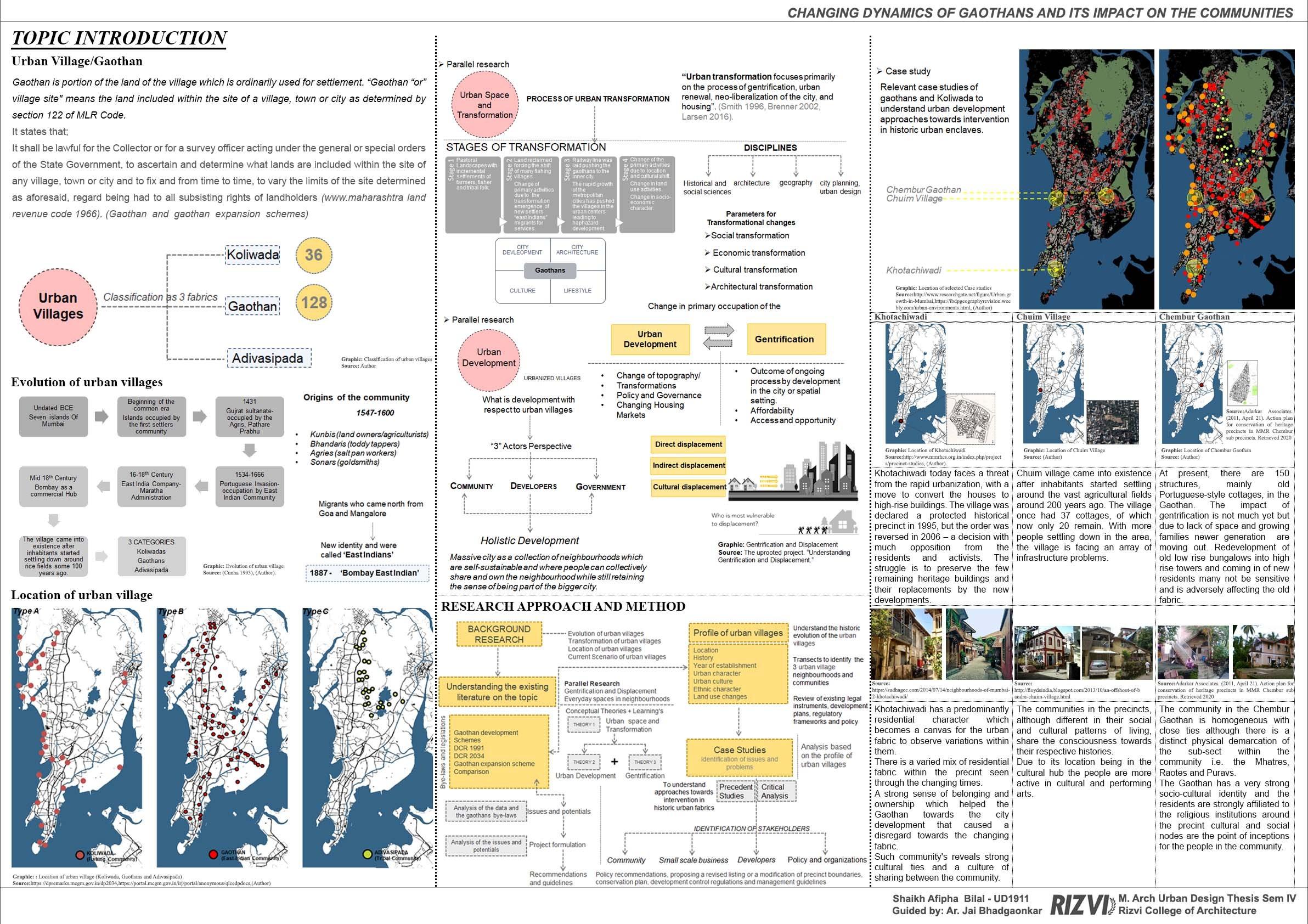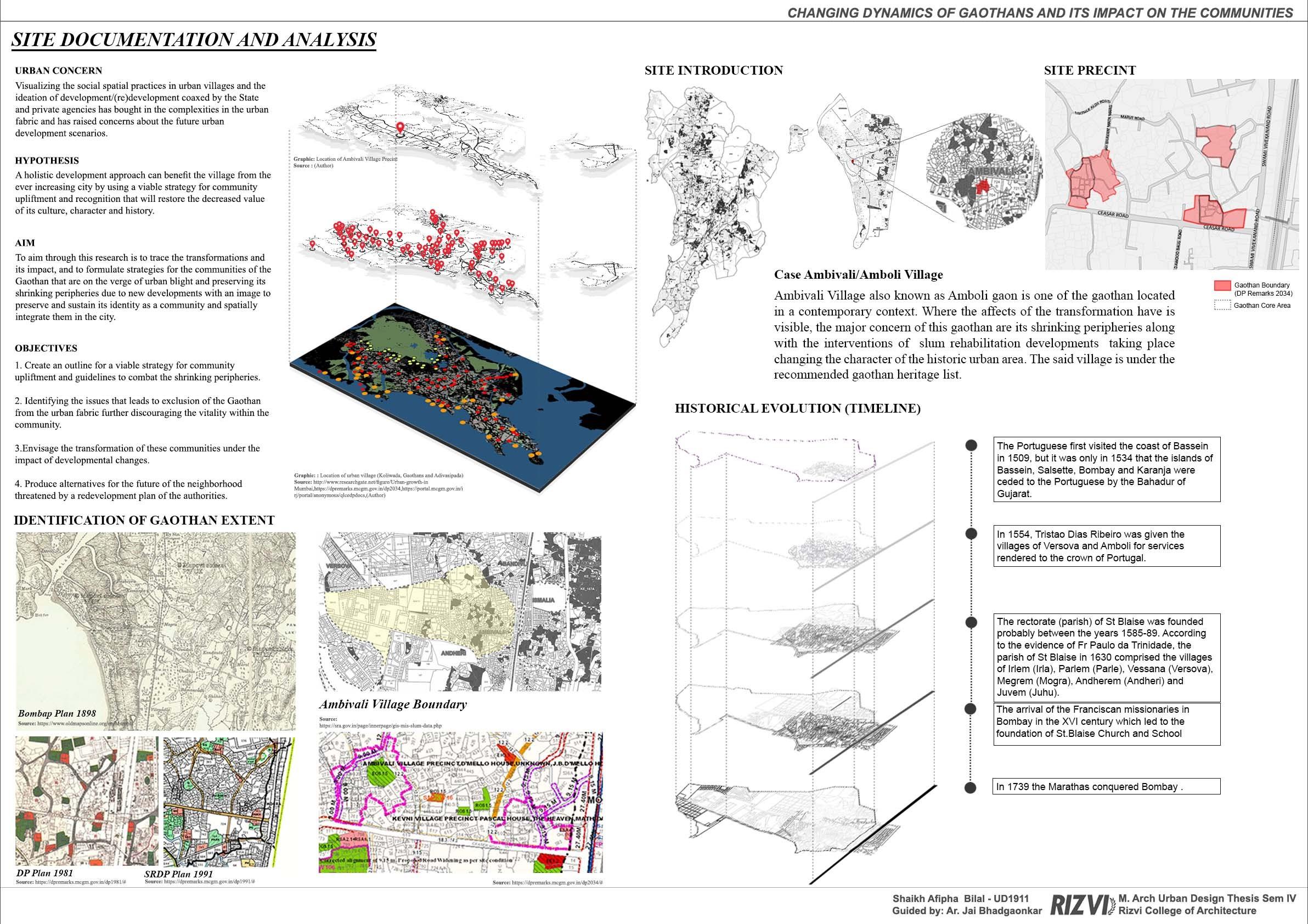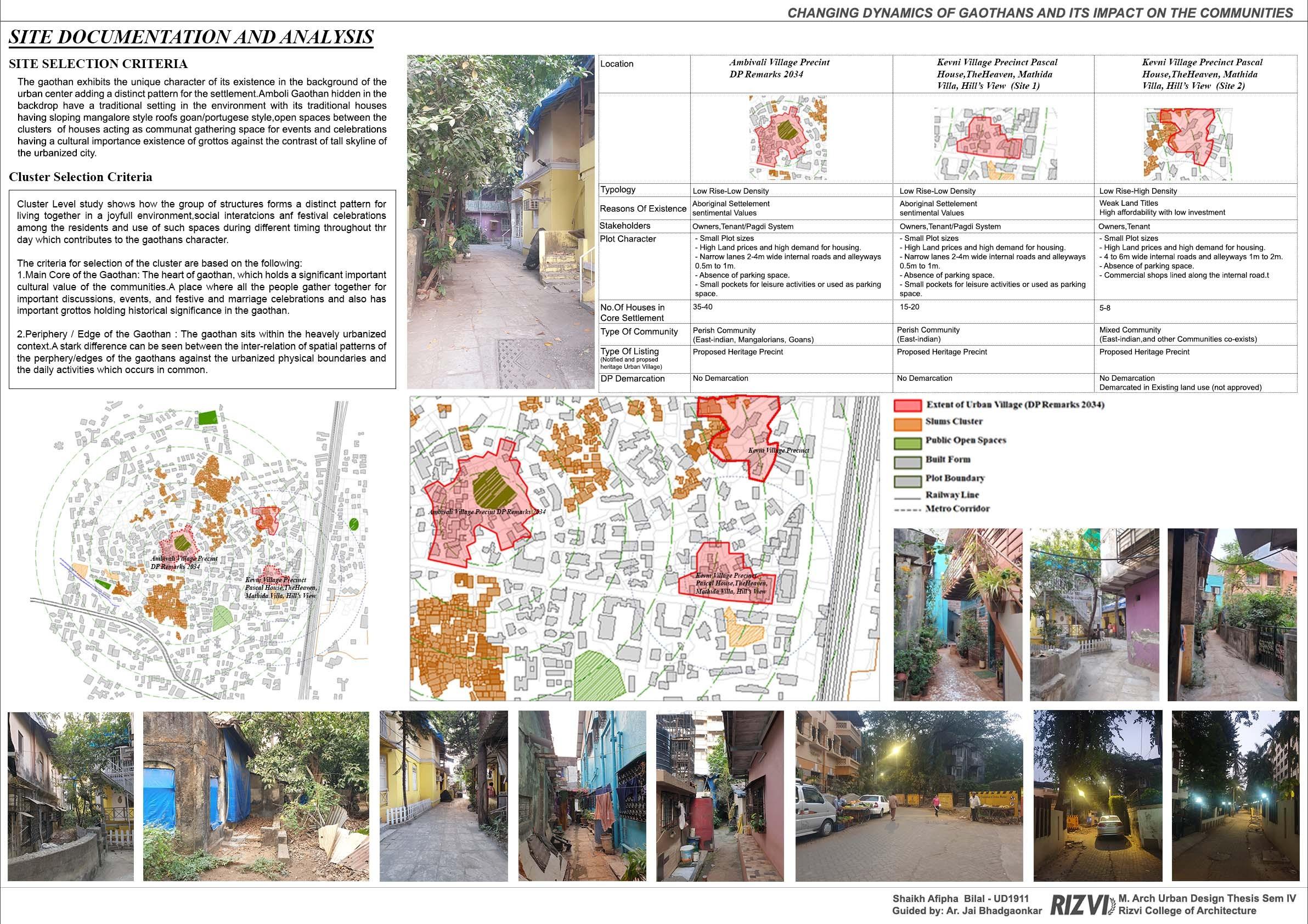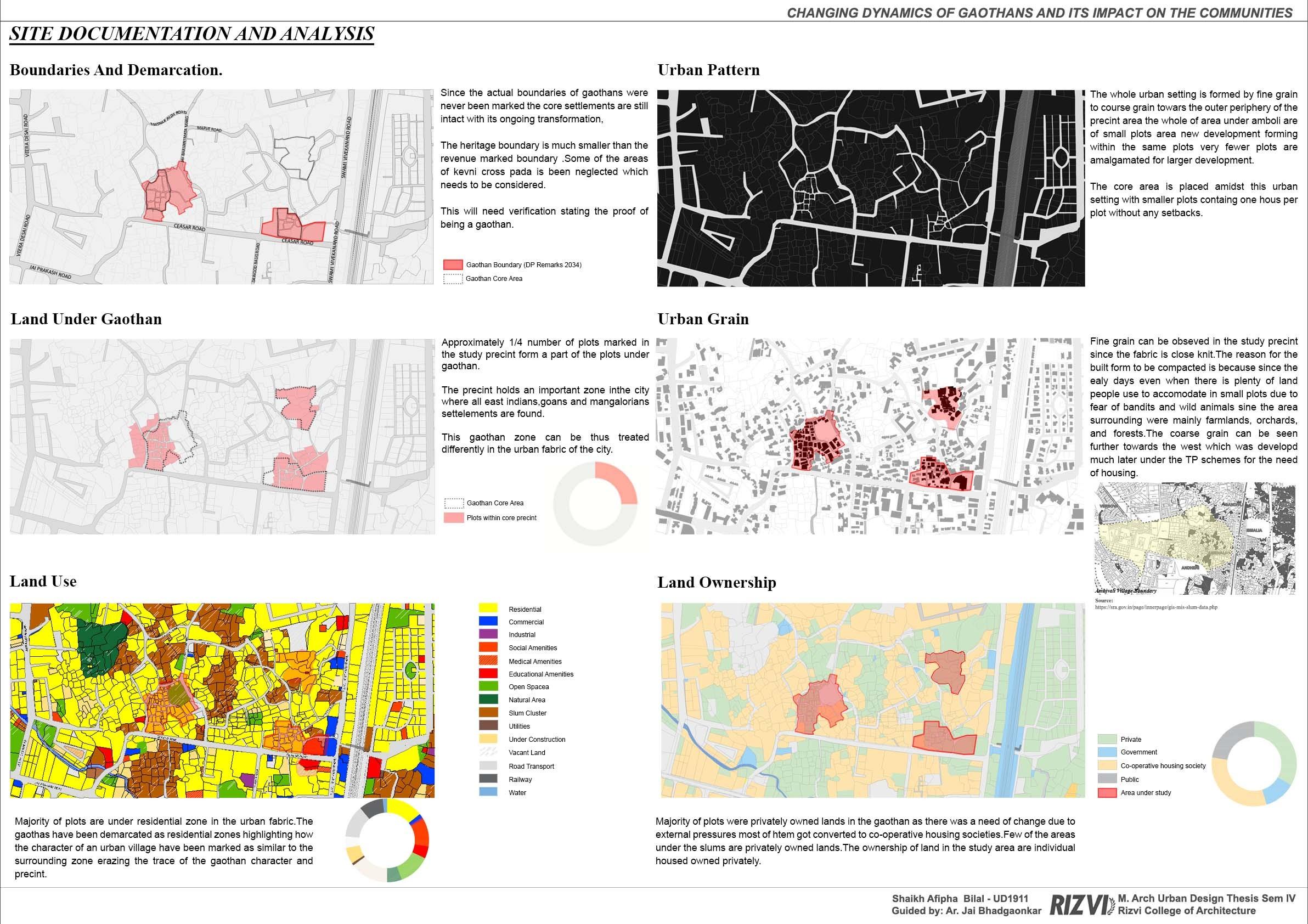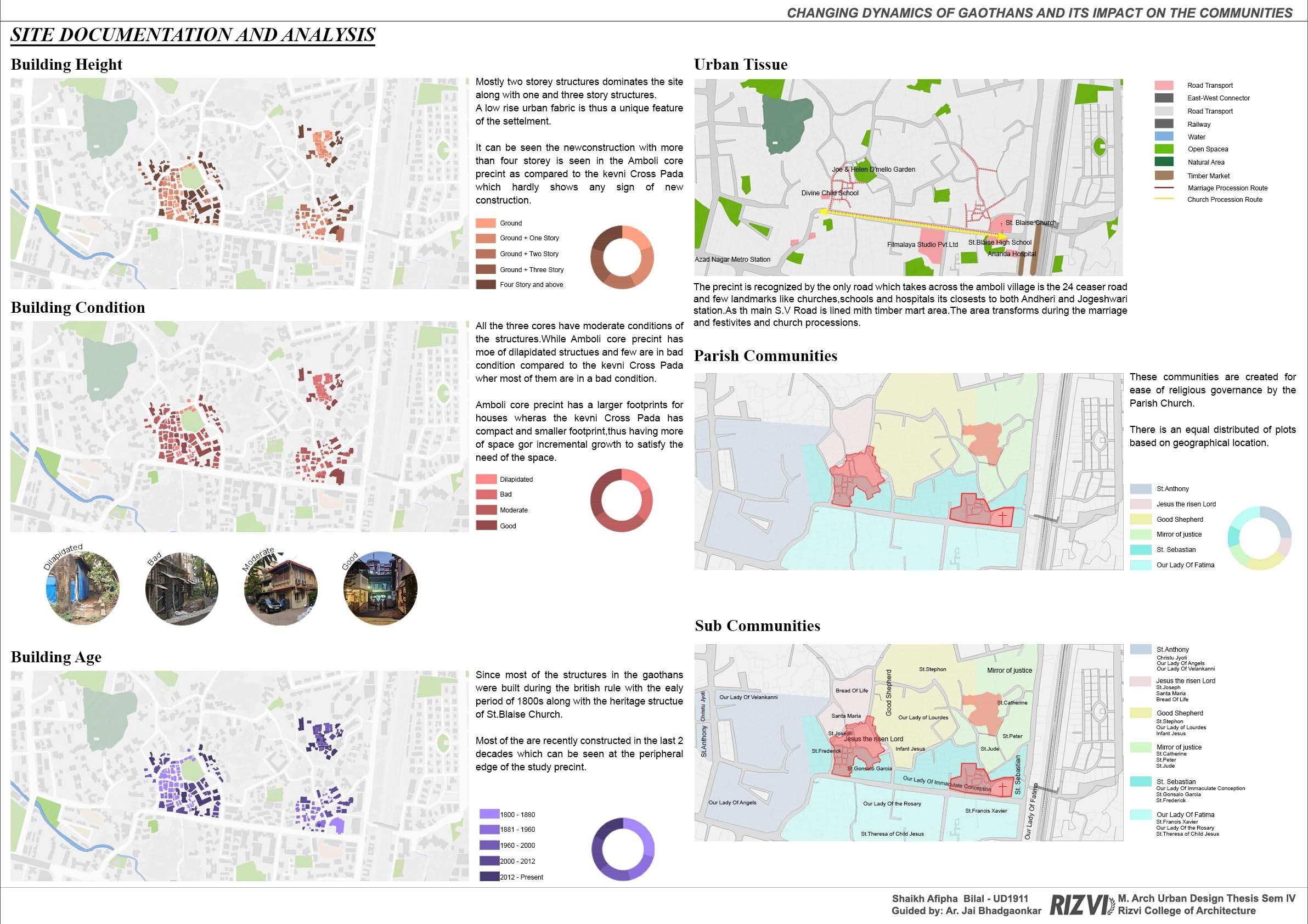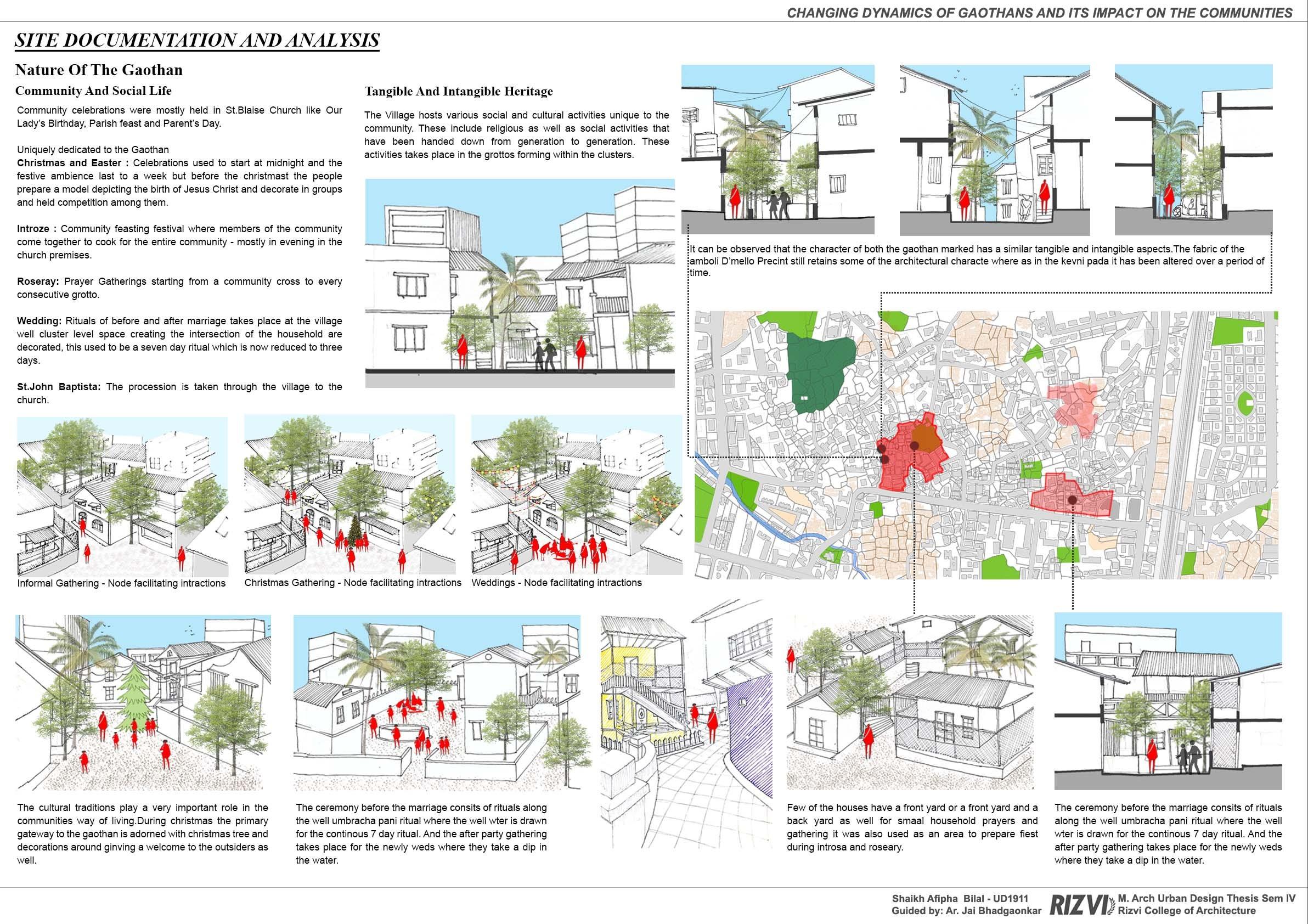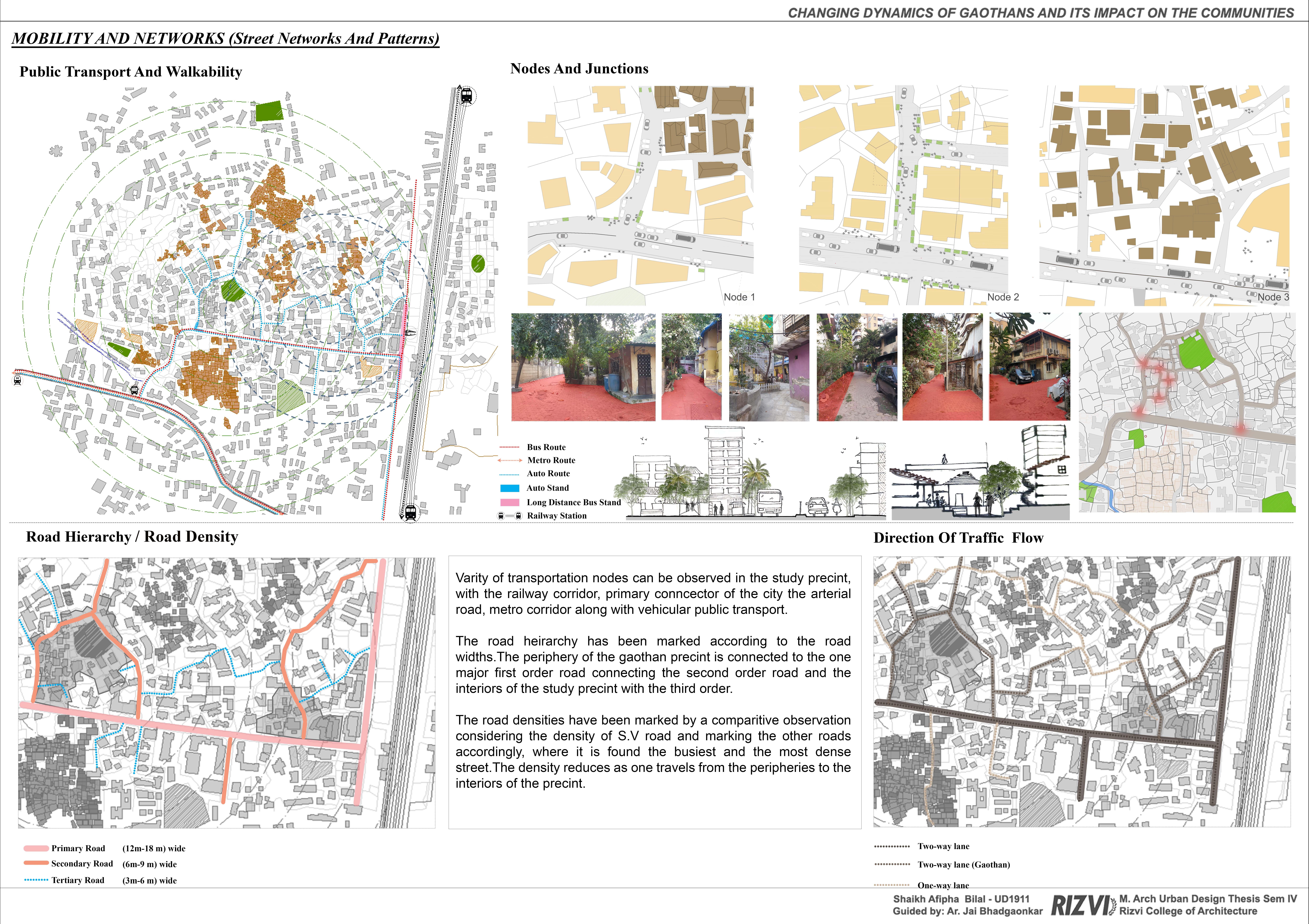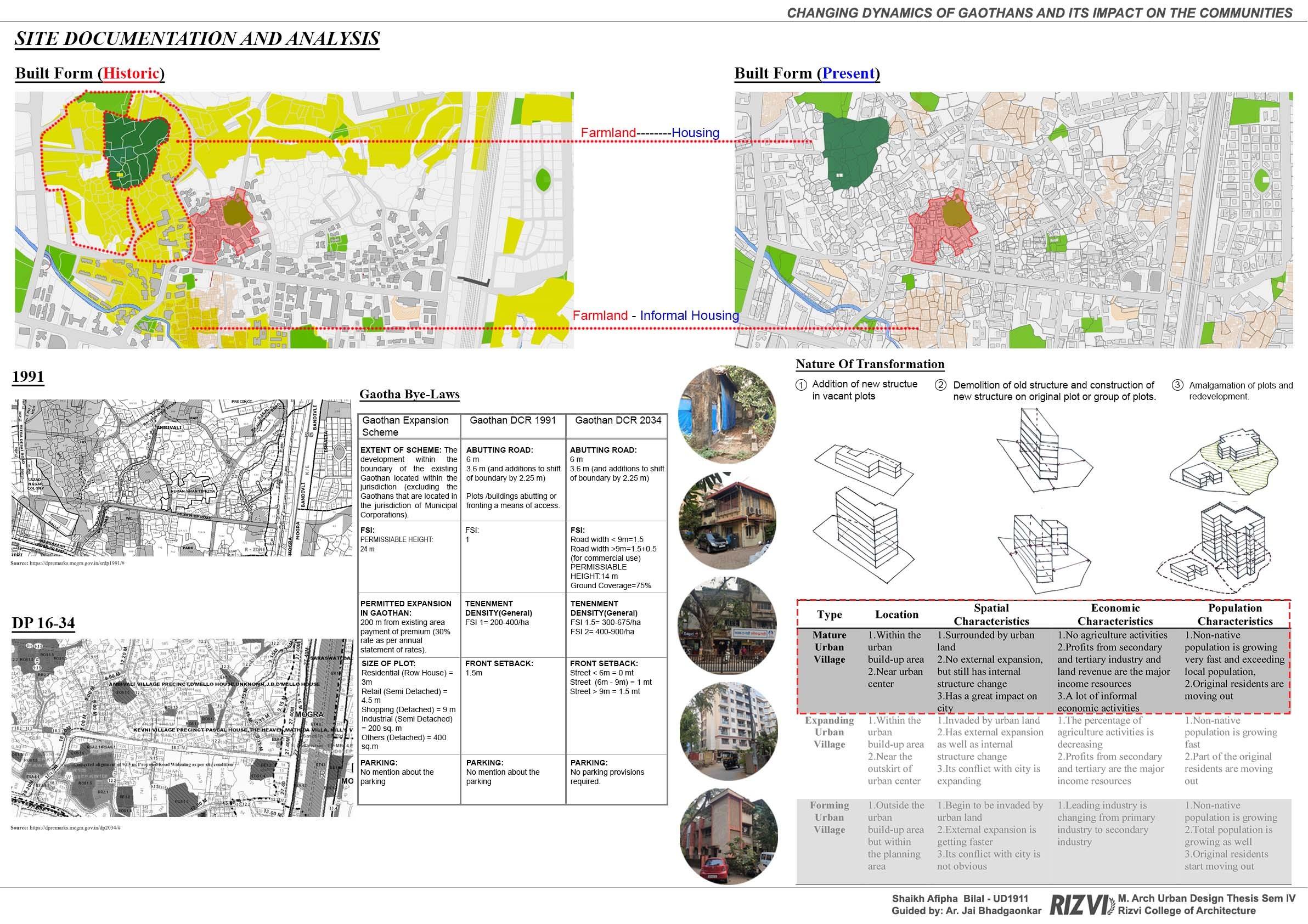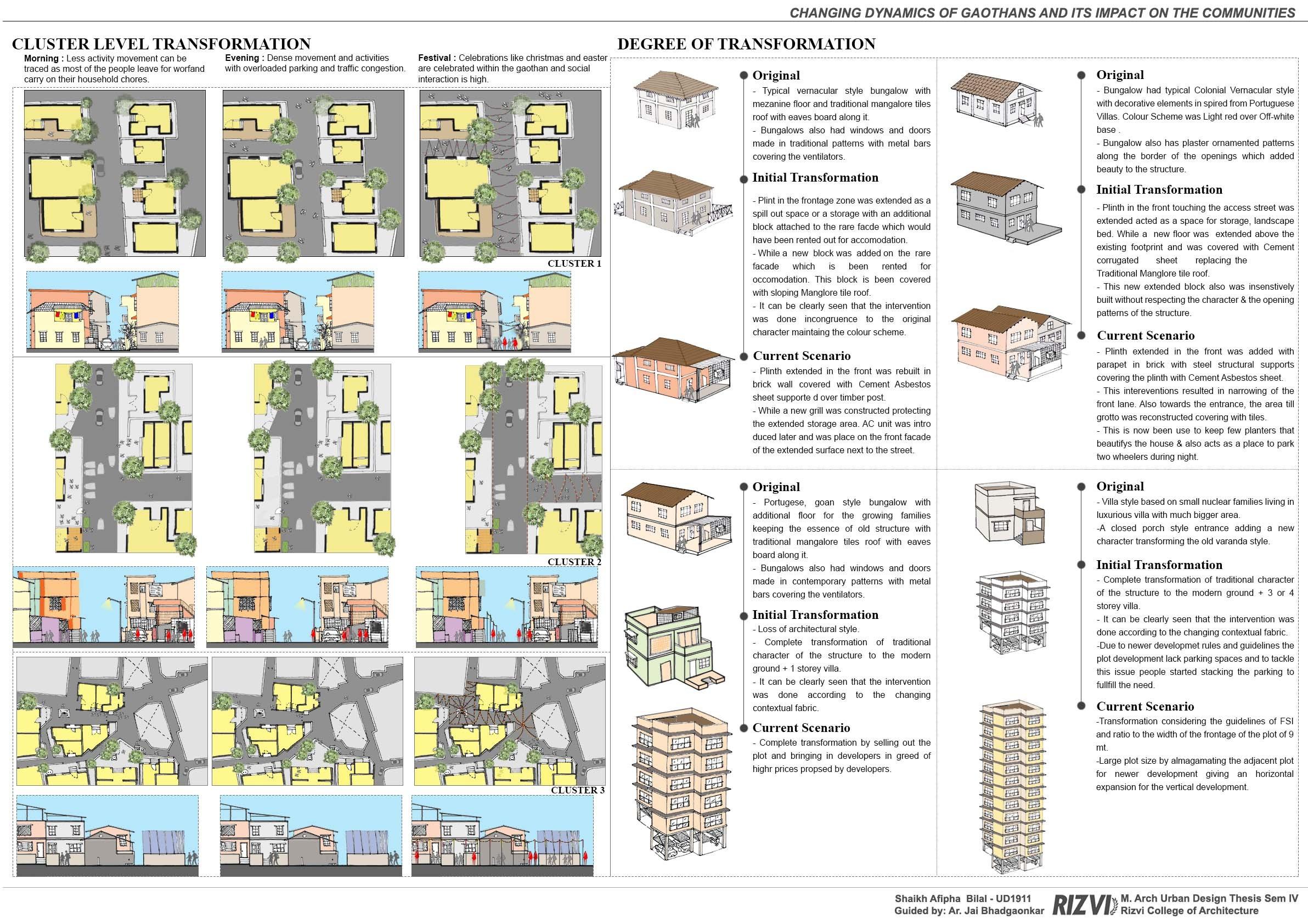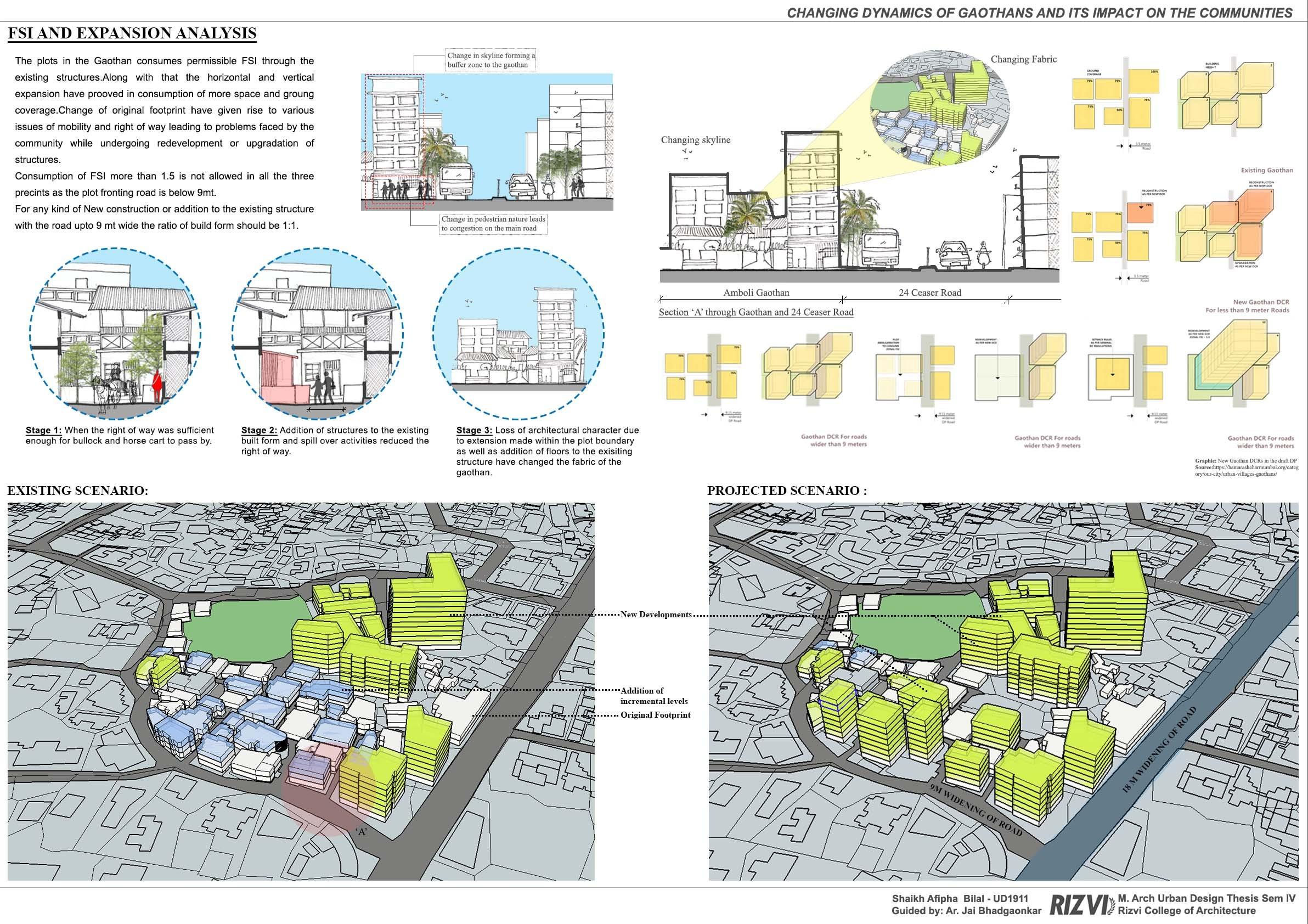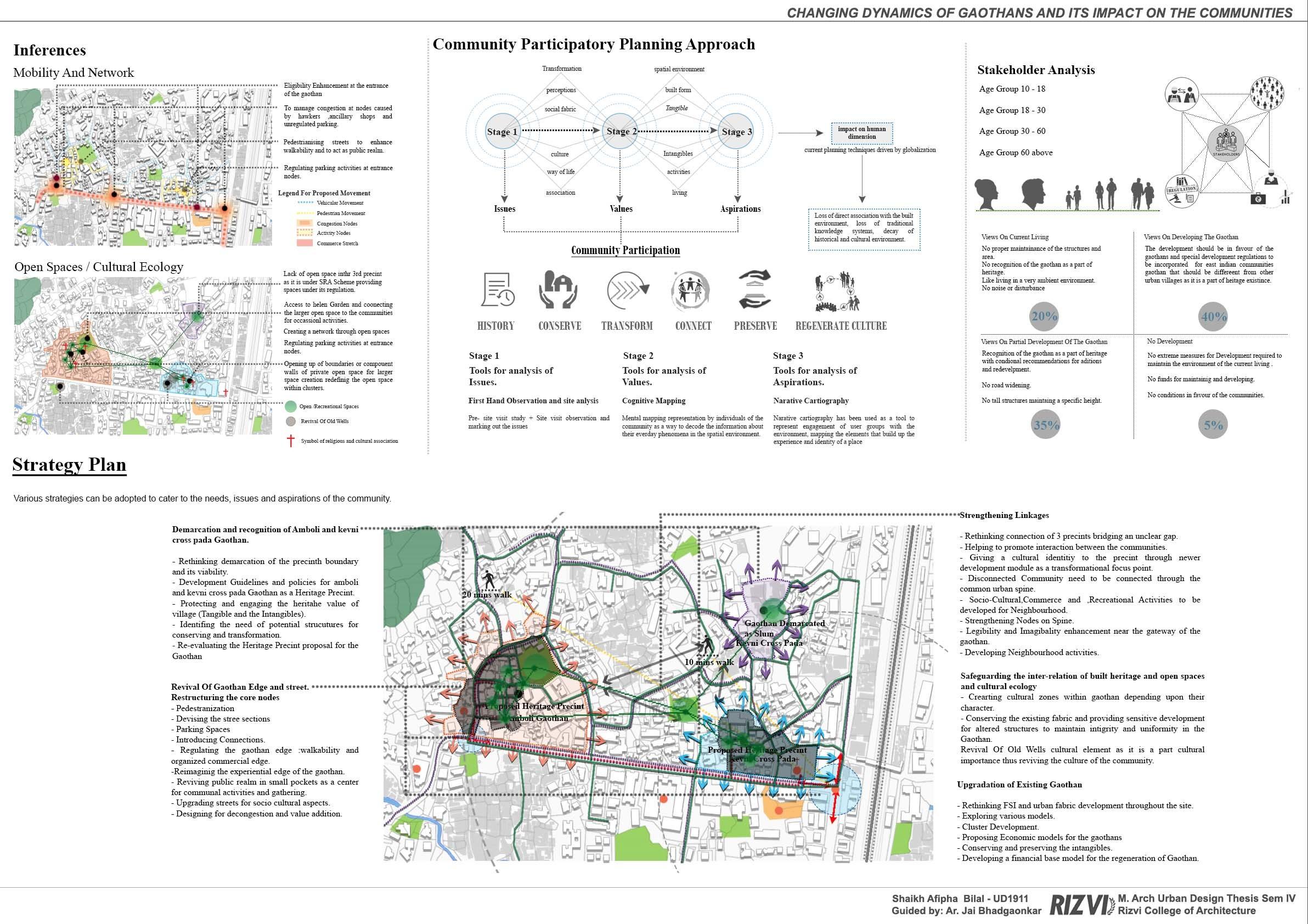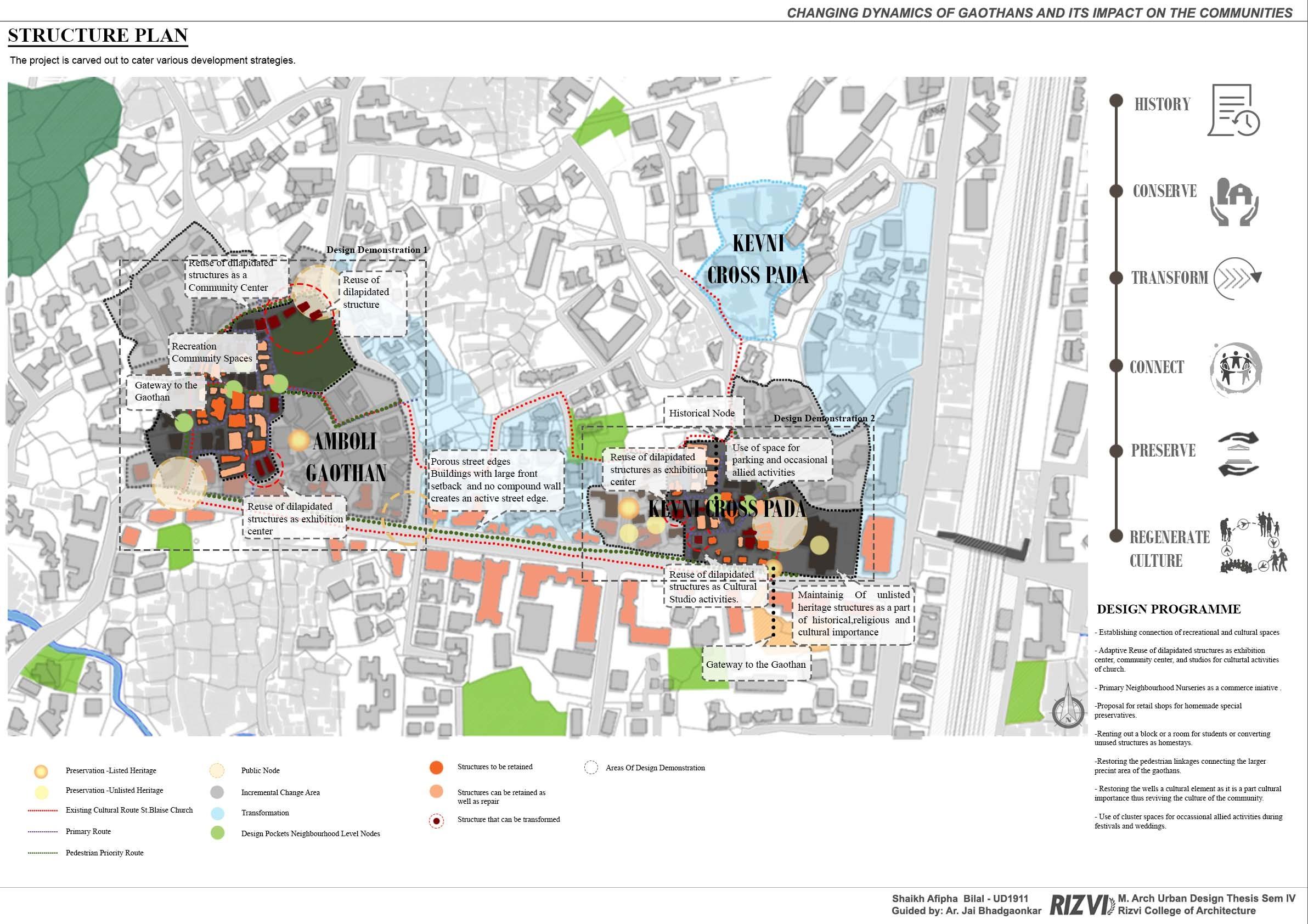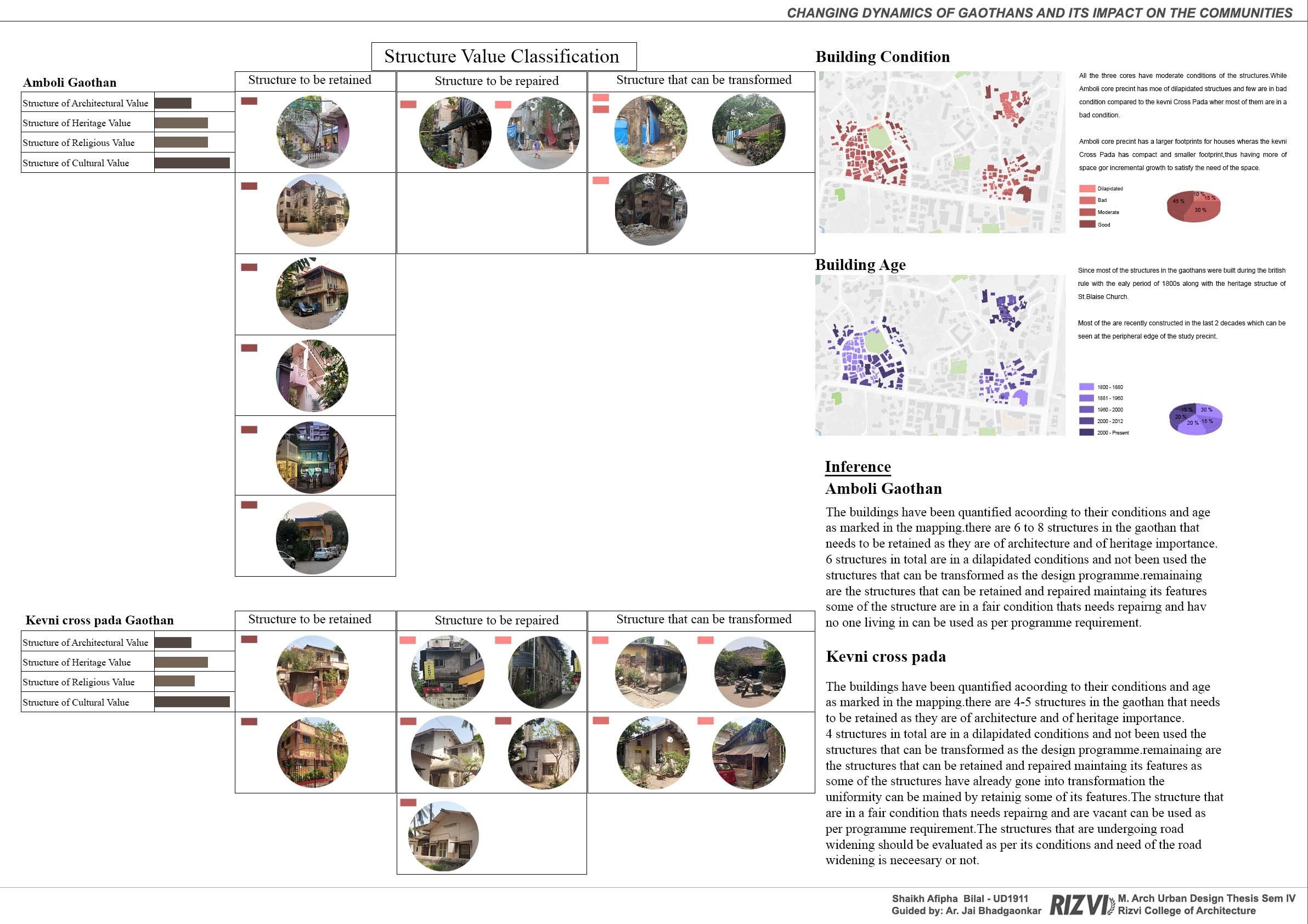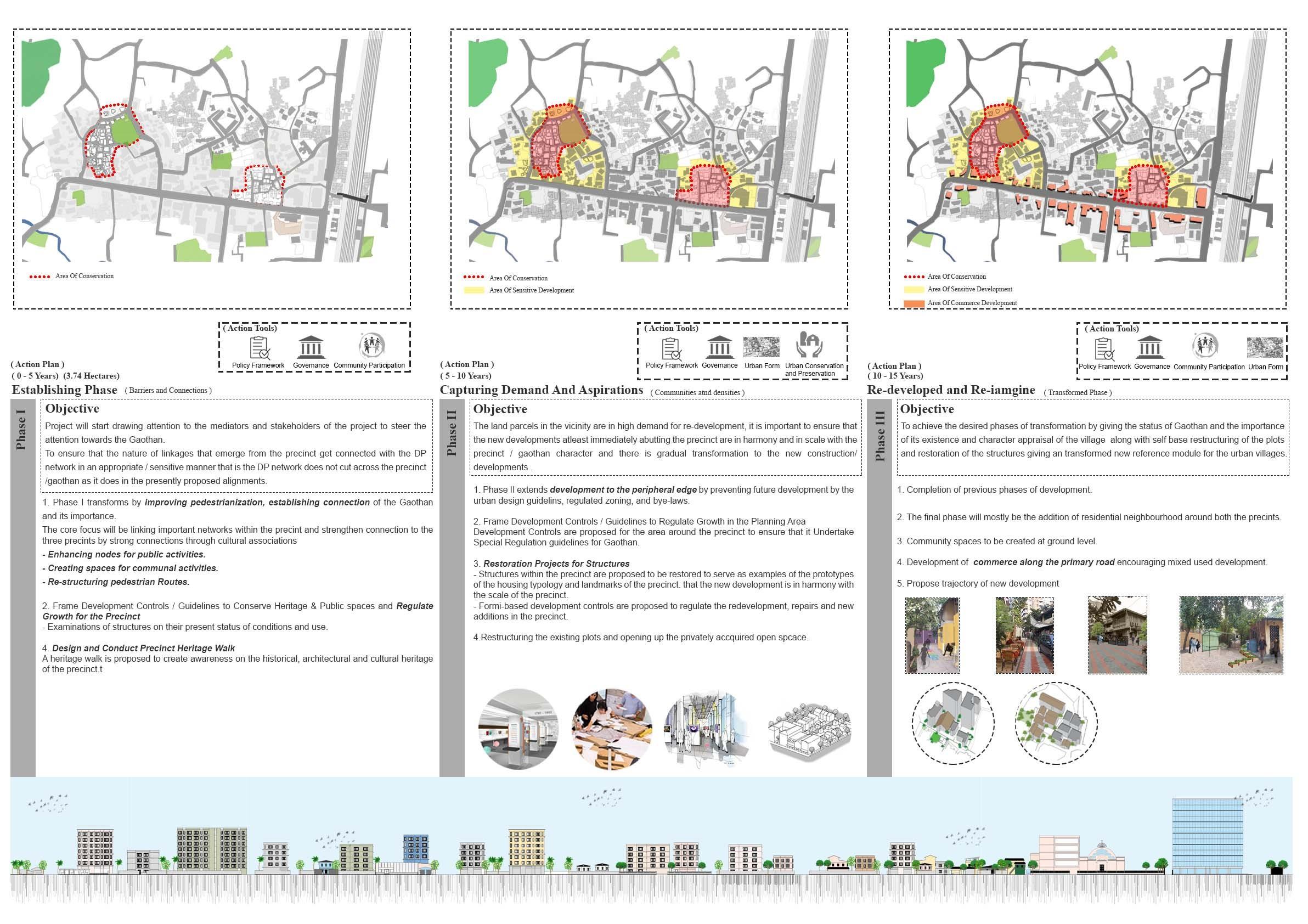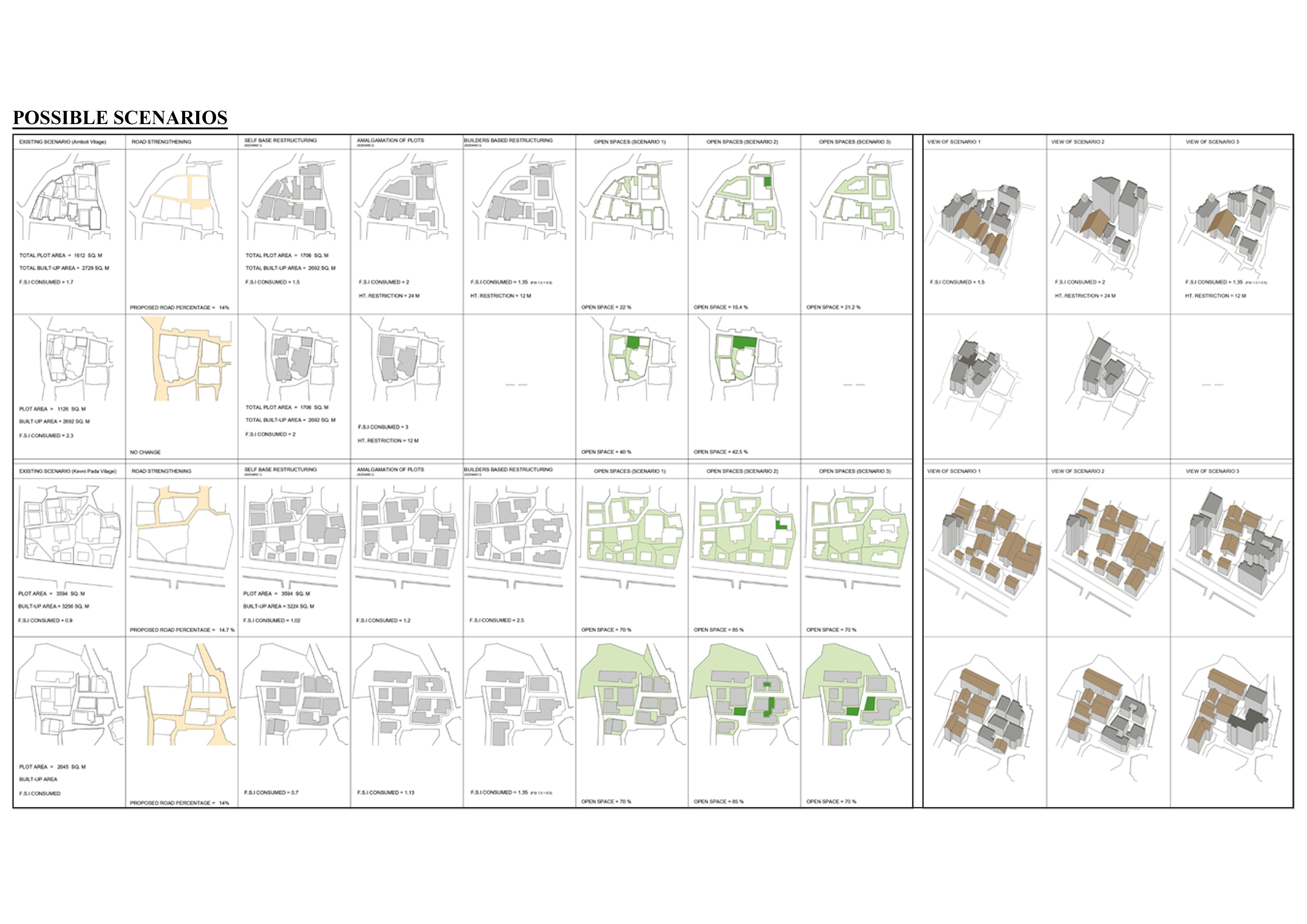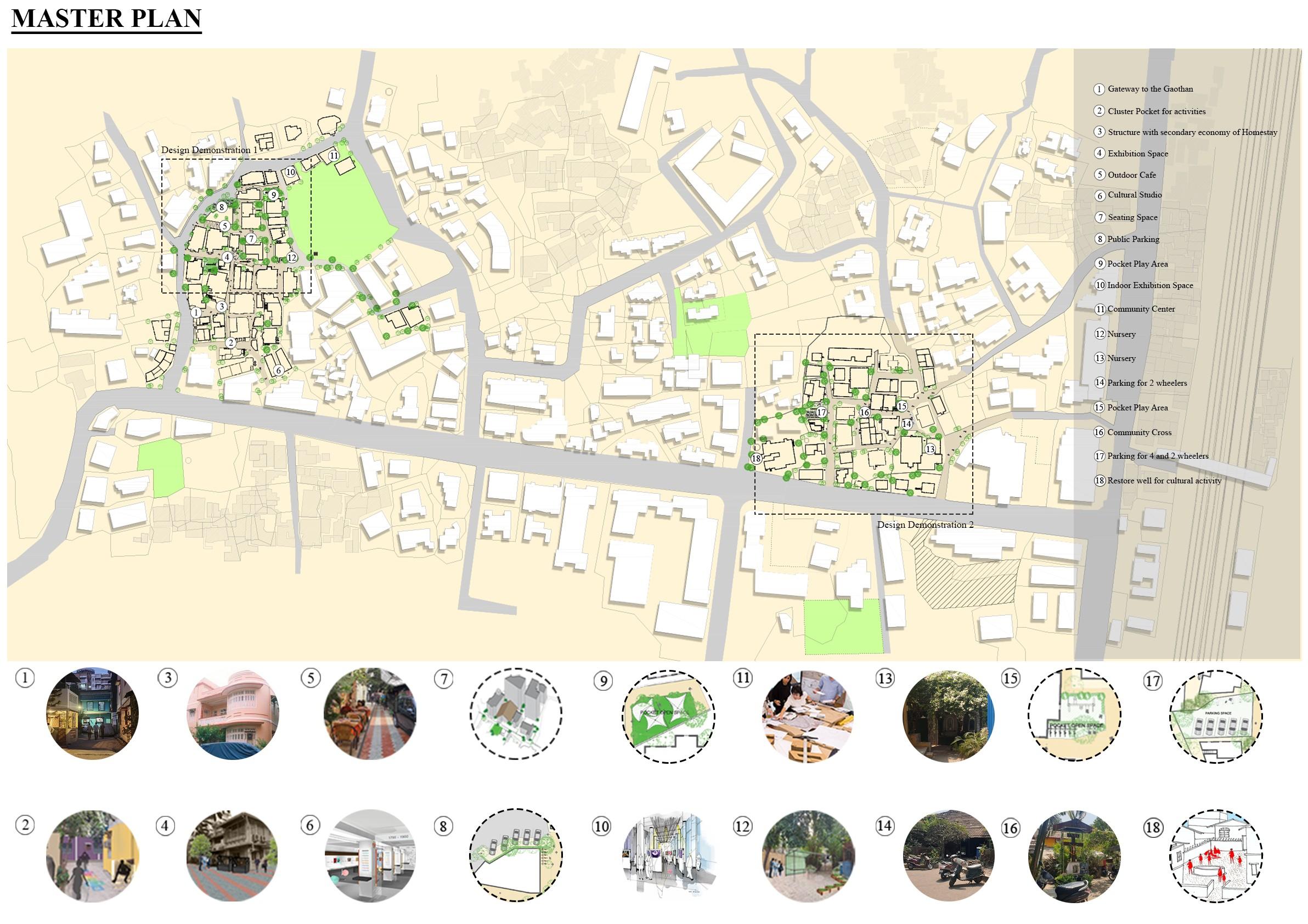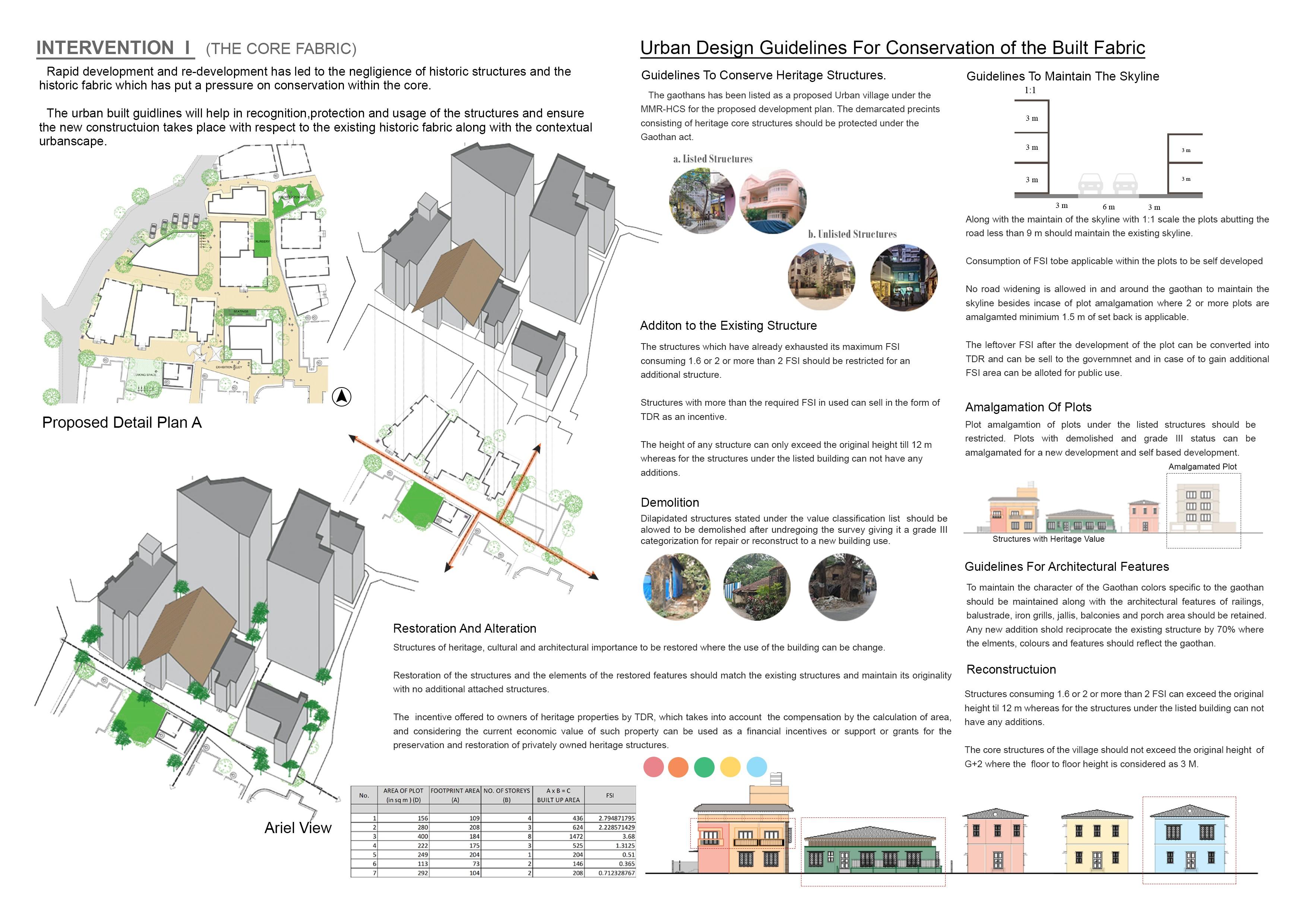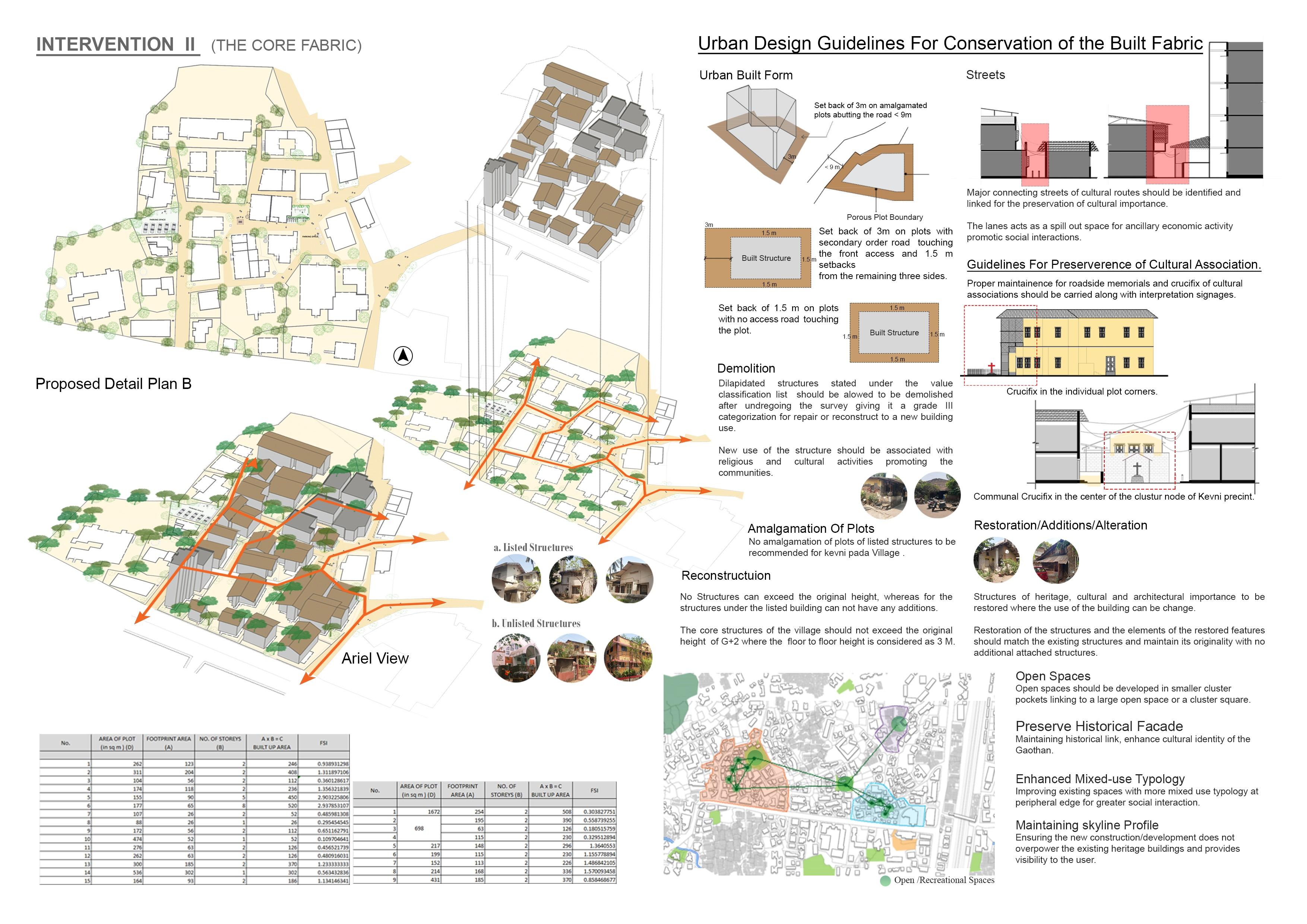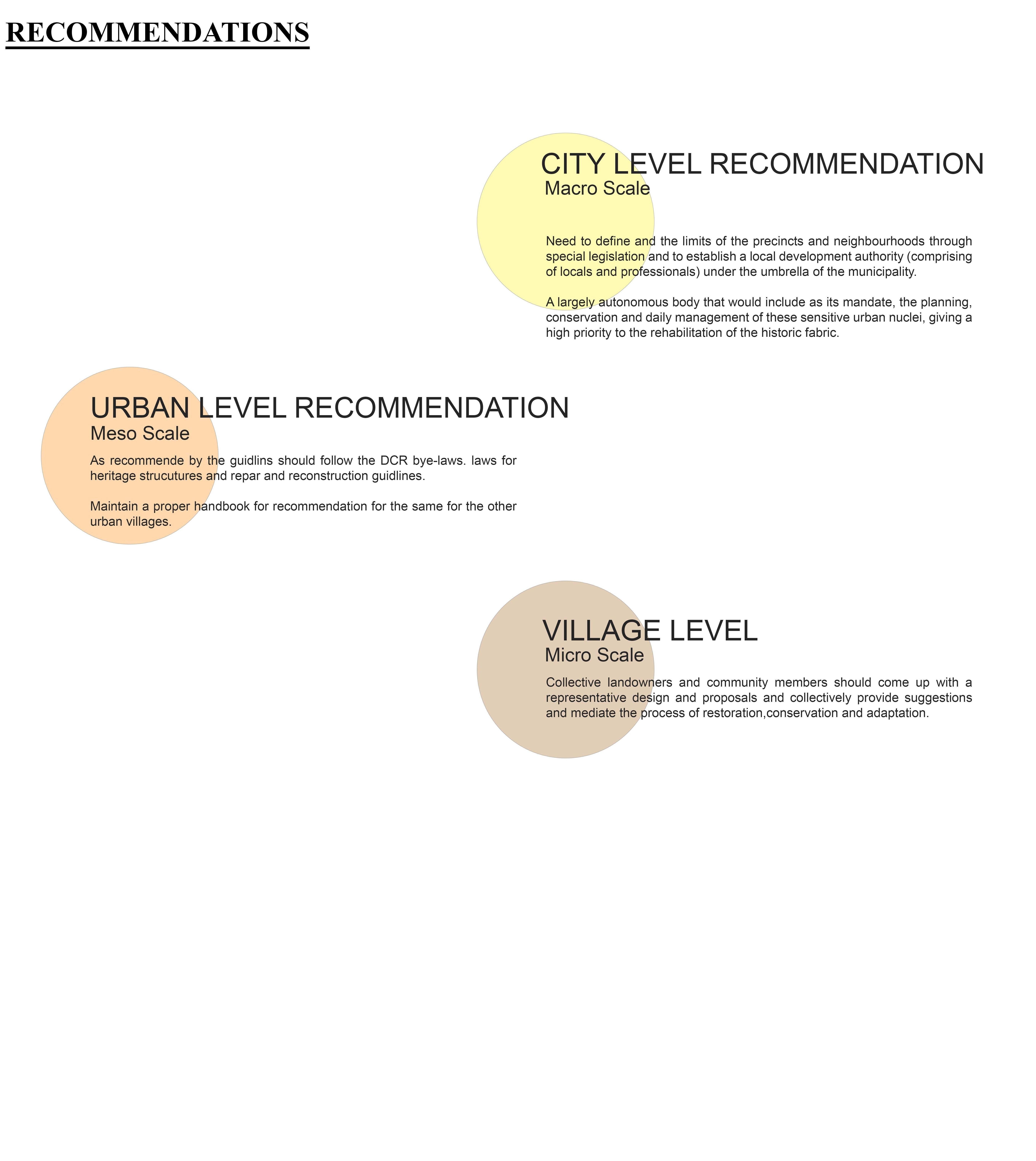CHANGING DYNAMICS
OF GAOTHAN AND ITS IMPACT ON COMMUNITIES
( AN APPROACH TO THE URBAN RE-DEVELOPMENT MODULE FOR THE HISTORIC AGRARIAN INDIGENOUS SETTLEMENT CASE: AMBOLI AND KEVNI PADA VILLAGE, MUMBAI, MAHARASHTRA. )
SHAIKH AFIPHA BILAL M.ARCH (URBAN DESIGN) 2019-2021
ABSTRACT
Urban villages recognized by their distinct settlements categorized by its land parcels within the geographical context of Mumbai as Koliwada (fishermen folk community), Gaothans (east-Indian community), and Adivasipada (the tribal community) dates back centuries. Once the first settler community’s strongly agrarian community (the east –Indian villages) has been engulfed by the city’s gentrification which helped to recognize and form the city’s agglomeration which is often encompassed by the city’s spatial growth providing a centrality in the urban context. For an urban village, under the title of development, the city is read as an aspect of opportunity but a probable threat at any point of time. The individuals have adapted to these changes over the years causing traceable transformations through the physical form of the settlement and its culture. As urban villages face the pressure of change under the urban development regime approaches. The approach of redevelopment and restructuring of the villages has bought a threat to its community leading to complex issues of non-up gradation of settlement, poor conditions of the structures and loss of its culture and character.
The villages should retain themselves creating a strong character of an indigenous community or they will become a lost identity in the city due to development as this development causes drastic variations in the character of the indigenous communal settlements. Thus this thesis aims to understand the communities that are on the verge of urban blight in the gentrified and developed neighbourhood by reading its character through different lenses, and analyses the influence by spatial transformation, policies and norms, and issue rising due to developments and to explore alternatives to the dominant redevelopment model. Using the redevelopment module as an example for the city level recommendations will help to build its loss sense of belonging in the city. At the same time it will be an example to avert the notion of gentrified city development to more form flexible approach that allows to integrate the local aspect to create a new version of the city’s identity.
KEYWORDS:
Urban Village, communities, neighbourhoods, indigenous communities, transformation, development, (re)development, gentrification, urban blight, restructuring.
